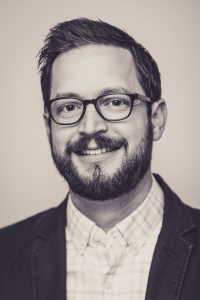Amazon Fires Burn While Brazilian Government Stalls: U Professors Weigh In
The Amazon Rainforest (Courtesy Flickr)
September 3, 2019
As fires in the Amazon rainforest continue to steadily grow, political upheaval in Brazil’s government is preventing any immediate action to take place to help control these fires.
Brazil’s National Institute of Space Research (INPE) website reports that 46.6% of the Amazon fires are occurring in Brazil. The next largest region affected is in Venezuela with 14.6%. Overall, more than 82,000 acres of Amazon rainforest in Brazil have been affected by fires.

Fires are not unusual in the Amazon. However, they received considerable attention this year in the media due to their size and impact. “Several factors are driving current interest and media coverage,” said Christopher Lewis, Program Coordinator of Portuguese and Brazilian Studies at the University of Utah.
One of the factors, according to Lewis, is an increased awareness of climate change. These fires are originally man made. Farmers use a method called slash-and-burn, where they cut down dried plants and burn them to make way for more farming.
Unfortunately, an excess of slash-and-burn techniques have caused the fires to burn uncontrollably and spread. The response from the government to quell these fires has been slow, and Brazilian President Jair Bolsonaro has been criticized for his overall response to the crisis.
Before the fires started, Bolsonaro had pledged to reduce protections for the rainforest and indigenous peoples. Such cutbacks can make way for developers to come in and exploit the land for commercial purposes, something that the Brazilian president said he hoped to do.

“The encouragement to exploit the rain forest through burning by the Brazilian president is contrary to the attitudes of previous administrations,” said Jim Ehleringer, distinguished professor of biology at the U.
After Bolsonaro was elected, he transferred the regulation of indigenous reserves to the agricultural ministry of Brazil, an entity controlled by corporate agribusiness lobbyists.
This move by Bolsonaro to exploit the Amazon for commercial purposes by letting the fires burn may end up working against him. “Regardless of his motives, and though only time will tell, I’m skeptical it will be a successful approach in this instance or any others,” Lewis said.
The Brazilian president claimed during a televised speech that he has “profound love” for the Amazon. During that speech, he also criticized what he calls “disinformation” about his response to the fires. “Bolsonaro is not any kind of political savant” despite being able to “promote and disseminate” disinformation, Lewis said.
Bolsonaro also refused to accept $20 million in aid unless French President Emmanuel Macron apologized to him for comments he’d previously made during the 45th G7 summit. Lewis said that no matter how the feud goes between them, it will play well with Bolsonaro’s base: “[That] may be what’s most important to him.”
After receiving international criticism for the way he handled the situation, Bolsonaro sent in the Brazilian military to battle the fires. The impact of the fires is greater than most people are aware of. Outside of displacing species, the fires have a greater effect on the ecology of the area as well as around the planet.
“The role of the Amazon Basin as a major contributor to photosynthesis (oxygen production [and] carbon dioxide reduction) on a global basis is large,” Ehleringer said. “The absence of rainforest vegetation negatively impacts global oxygen production.”
Pollution is another concern. “On a global basis, these fires contribute to poor air quality across the region,” he said.
The fires negatively affect the water quality and nutrient concentration throughout the Amazon River, which affects aquatic life. The land is impacted by the fires reducing soil quality for farming, making it less productive over time.
“[Farmers] must move onto different lands, through more burning, because nutrient levels have become too low to support grasses [for cattle grazing],” Ehleringer said.
According to the latest figures reported by National Geographic, about 76,000 fires are currently burning in the Amazon. Due to the number of fires and the widespread devastation it has caused, it will take affected areas decades to return to their original lush state.








Vinit • Sep 3, 2019 at 5:14 am
Thank you for the update.
Please bear in mind that Part of Amazon Rainforest that is destroyed will NEVER Heal.
At best it will turn into a grassland like the Savannah.
There is substantial information about this already.